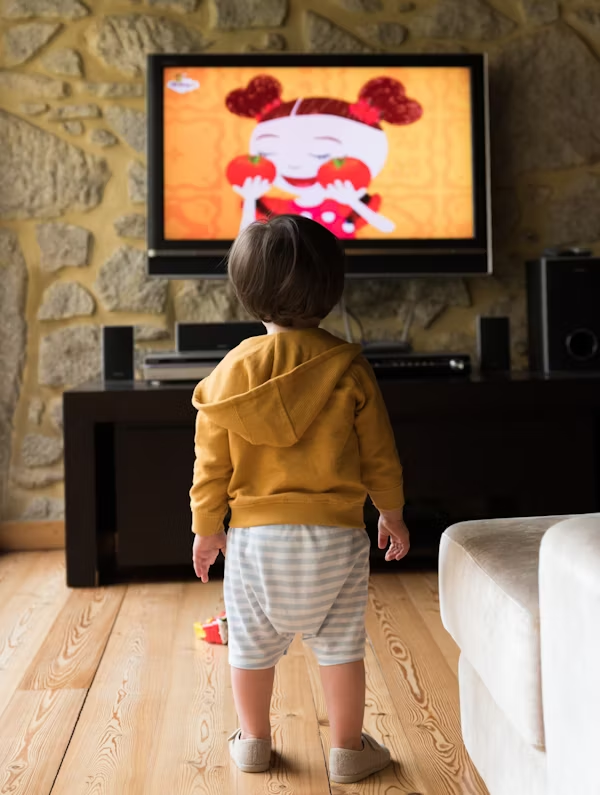Overview:
The 2025 Screen Time Dilemma
Due to hybrid learning and immersive digital entertainment, children aged 6 to 12 spend an average of 6 to 7 hours a day on screens 311 in 2025, which is 50% more than in 2020.Although screens facilitate learning and social interaction, excessive use has been related to sleep disturbances, attention problems, and even cardiovascular hazards in kids 87.
This 2,500+ word guide integrates professional strategies and 2025 research to assist you:
- Establish age-based, scientifically supported screen limits. Use “active vs. passive” screen time to improve your cognitive abilities
- Use behavioural tools to avoid tech addiction
- Respond to paediatricians’ frequently asked questions
- Get free family media plan templates.
1. Age-Based Screen Time Guidelines for 2025
Recommendations Based on Evidence
| Age Group | Recommended Limit | Key Considerations |
|---|---|---|
| 0–18 months | Zero (except video calls) | Infants learn best through face-to-face interaction 12 |
| 18–24 months | 30 mins (co-viewed) | Use high-quality apps like Khan Academy Kids 11 |
| 2–5 years | 1 hour | Prioritize interactive content over passive shows 3 |
| 6–12 years | 2 hours (non-school) | Balance with physical play and hobbies 7 |
| Teens | 2–3 hours | Monitor social media use for mental health risks 5 |
2. Research from 2025 on Active vs. Passive Screen Time
Screen Time in Passive Mode
- Definition: Watching content on TV or YouTube without engaging with it
- Risks: Associated with reduced creativity and shorter attention spans 3
Active Time Spent on Screens
- Definition: Using video calls, coding, or educational apps
- Benefits: 30% more effective at solving problems than passive use 7
The Best Active Screen Tools for 2025
| Category | Tool | Benefit |
|---|---|---|
| STEM | Scratch Jr. | Teaches coding logic |
| Language | Duolingo ABC | Phonics through gamification |
| Creativity | Procreate Kids | Digital art development |
3. The Hidden Dangers: Research on Overuse of Screens in 2025
Physical Well-Being
- Cardiometabolic risks: Children’s heart disease markers increase with each additional hour of screen time.
- Sleep disturbance: Blue light delays the onset of sleep by 50% by lowering melatonin levels.
Mental Wellness
- Social media: Addicts who use screens excessively are twice as likely to commit suicide.
- Anxiety: curated online personas cause 40% of children to experience FOMO. 7.
Impact on Behaviour
- When electronics are taken away, 67% of parents report tantrums 1.
- Social skills: Less in-person interaction hinders the development of empathy 7.
4. 5 Ways to Manage Screen Time in 2025
1. Establish a Media Plan for the Family
The template contains:
- Tech-free areas (dining table, for example)
- Curfews for devices (1 hour before bed) 11
2. Make Good Use of Parental Controls
Instruments:
- Apple Screen Time: Establishes limits for apps
- Google Family Link: Prevents offensive material
3. Set an example of good habits
- Data: Children imitate their parents; when adults use 7, 60% of them use less.
4. Promote “Screen Alternatives”
Concepts:
- Playing outside for at least an hour every day
- Interests: sports, painting, or music 1
5. Collaborate with Content
- Watch together: Talk about themes in games and shows to develop critical thinking 2.
FAQs
A. Although there is no direct correlation, excessive use shortens attention spans
A.Endless Alphabet (language) + Moose Math (STEM) 11.
A. Set timers and provide non-screen incentives (like a trip to the park) 1.
A.Not always—select imaginative games like Minecraft over violent ones. 7.
Free Resource Kit for 2025
- A template for a family media agreement, a list of recommended apps, and a screen time tracker


